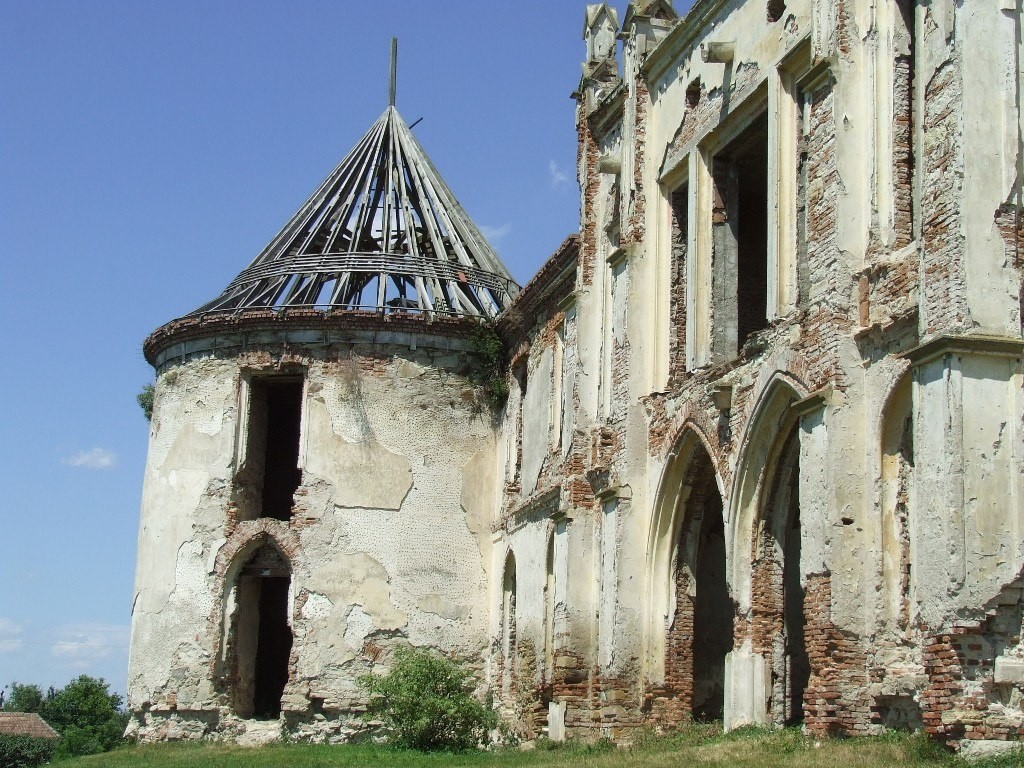Bánffy Castle
In what follows I will write a few words about the biggest Castle in Transylvania, which was called the Versailles of Transylvania. The bánffy Castle in Bonţida ( Cluj). It is a castle in contrast to the Baroque Bánffy Palace in the city of Cluj. The Palace was built in the 18th century by the Governor of Transylvania and is the seat of Museum of art. The Museum is in danger of being evicted as a result of property retrocession.
The Bonţida Castle is located 30 km north of Cluj, going on E 576, meaning to Dej where you go through 2-3 miles on DJ 161 to Bonţida. The Castle has roots with 600 years ago when on land given to him by King Sigismund of Luxembourg, Baron Banffy began construction of a castle-fortress. The construction lasted 100 years, from 1437 until 1543, and was fitted with fortified walls. In the first half of the XVII century the owner of Dionysius with the italian architect Banffy Serena has increased the size of the final Castle. He gave particular attention to the ramparts which were supplemented with four bastions and a guard tower. The next offspring Banffy, sought to impress the great palaces of the world mark, by copying the styles of hotels (palaces) and the French Schönbrunn in Vienna. 70 ha park. that went up in the Somes has been decorated with a pond, fountain, statues.

The arena, buildings were stables, service rooms. Two wings were built that gave U-shape and the Castle courtyard in front of the gate became Court of Honor. The entrance gate was decorated with imposing classical statues. Given the long period of uplift of the Castle and in the following centuries, restorations benefited from the construction to the Renaissance styles (15th century), Baroque (17th century) and neo-Gothic (19th century). Such changes and developments which have kept place, Castle in Bonţida reached Transylvanian Versailles. The destruction of the Castle began at the end of World War II, when the castle was used by the German army as a military hospital and then set fire to the withdrawal. It was a revenge for the actions of the Nazis that we had the last Bonffy because the owner together with Hungary to betray the Germans in 1944.
The Castle has a nice lady who greeted us was guided throughout the duration of the visit to our luck, as I found out later that not all of the time you can have such luck.
Forth in the 15th century the Baron of Banfy gets approval to build a city on this field, ending it barely onto the middle of the 16th century the two architectural styles are evident in the construction of the castle today are the Baroque and Renaissance.

At present the castle is still preserved the U shape you can see old uses: main building, the gate Miklos, stables, riding school (located separately from the shape of the building), and the mill (located at the entrance of the Castle, on the right side). The main building, the most imposing is almost the most destroyed. On the right side, towards the garden, no further differentiate than ruins. The stables are hit particularly hard, as well as school hipica. At the entrance of the Castle, under the sun exposed several vestiges, perhaps you could save.
The less damaged is the kitchen, probably because it was built later, in the premises where he/she has opened a coffee shop "Art Cafe". Here we could warm up with a hot tea lady who served us which was also delayed and guide the Lord with your tickets. I learned then that the people here are proud with the visit of Prince Charles, on the occasion of the commencement of reconstruction works.
Bánffy Castle, Bontida Walloon, Cluj County, is considered the largest of the Transylvanian Castle, wearing and the designation of the Transylvanian Versailles, but also has been included on the list of the most degraded 100 historical monuments of the world. How long it will go until they will really get the real status?
Photo gallery
Content available in other languages
- Português: Castelo Bánffy
- Español: Castillo de Bánffy
Rate and comment about this place!
Do you know Bánffy Castle? Share your opinion about this place.


















